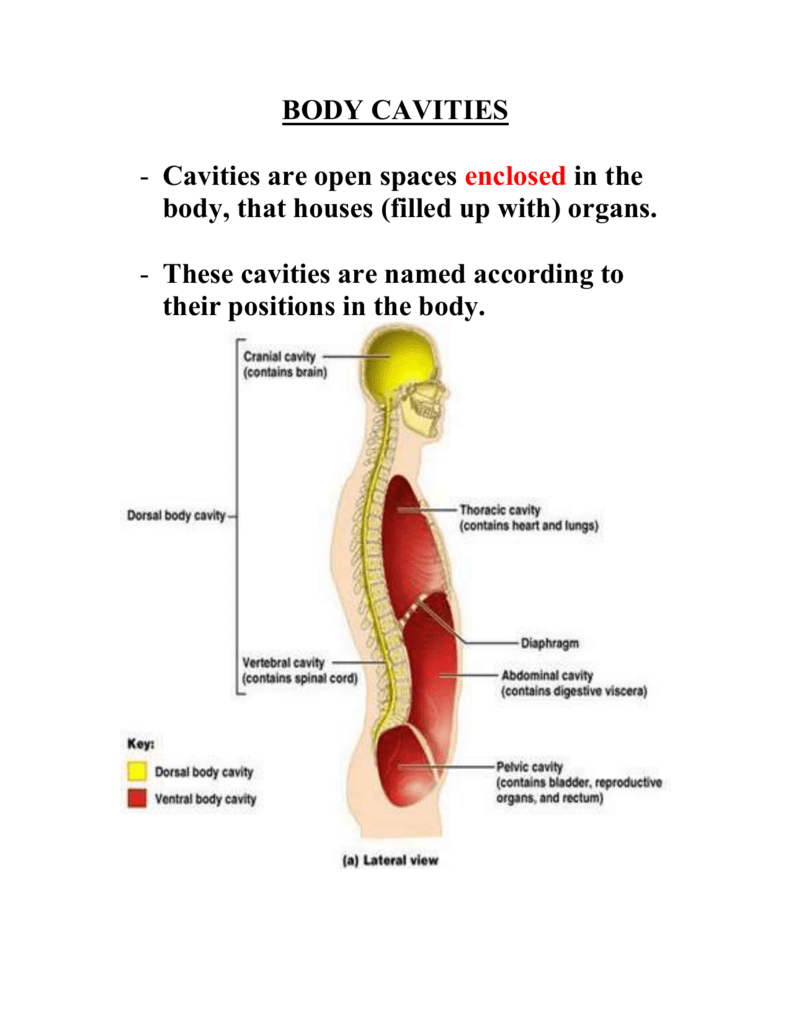
body cavities Winston Knoll Collegiate
What Are Body Cavities? The human body, like that of many other multicellular organisms, is divided into a number of body cavities. A body cavity is a fluid-filled space inside the body that holds and protects internal organs. Human body cavities are separated by membranes and other structures.

Human Anatomy Labeling Body Cavities Human Anatomy
A body cavity is any space or compartment, or potential space, in an animal body. Cavities accommodate organs and other structures; cavities as potential spaces contain fluid. The two largest human body cavities are the ventral body cavity, and the dorsal body cavity. In the dorsal body cavity the brain and spinal cord are located.
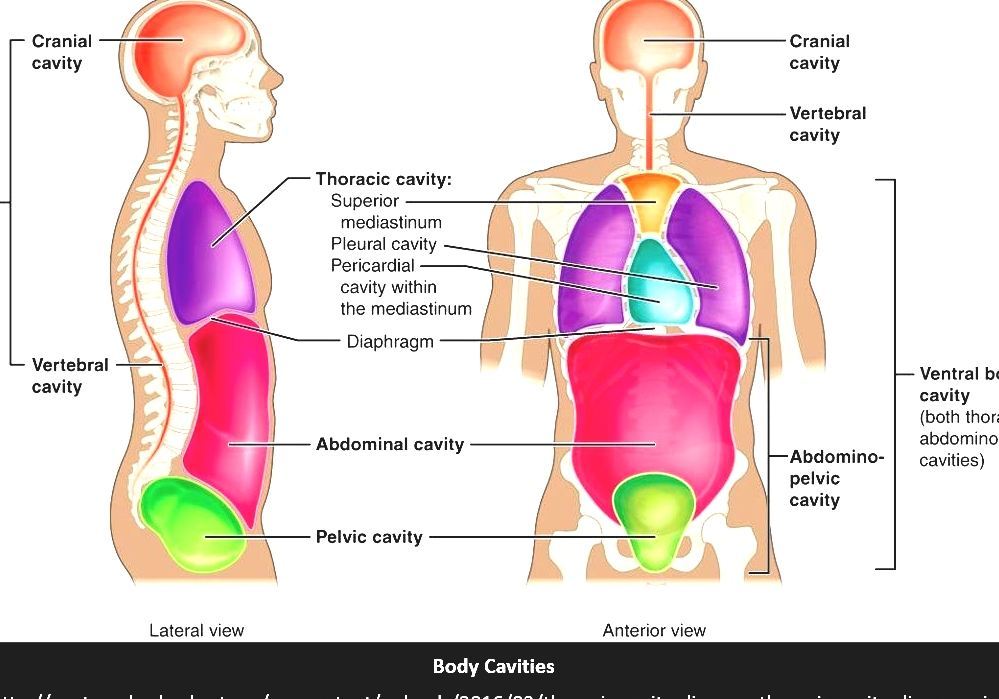
Body Cavity Cavities Of The Human Body
Anatomy Oct 24 Body cavities along with their organs and membranes simplified! Labeled diagrams, definitions, and lateral views included! High-yield flow chart and table of the dorsal, ventral, cranial, spinal, thoracic, pleural, pericardial, abdominal, and pelvic cavities! Save Time with a Video!

Body Cavities Chest Cavity Anatomy and Body Cavities Anatomy
Label the Body Cavities Answers: Front View: 1. Cranial Cavity 2. Vertebral Canal 3. Mediastinum 4. Pleural Cavity 5. Pericardial Cavity 6. Diaphragm 7. Abdominal Cavity 8. Pelvic Cavity 9. Abdominopelvic Cavity 10. Ventral Cavity Side View: 1. Cranial Cavity 2. Dorsal Cavity 3. Vertebral Canal 4. Thoracic Cavity 5. Diaphragm 6. Abdominal Cavity 7.

Illustration of Anterior Body Cavities Stock Image C017/2710
Ventral Cavity The ventral cavity is divided by the diaphragm, a thin dome-shaped sheet of muscle, into a superior thoracic cavity as well as an inferior abdominopelvic cavity. The thoracic cavity is guarded by the rib cage and contains the heart and lungs.
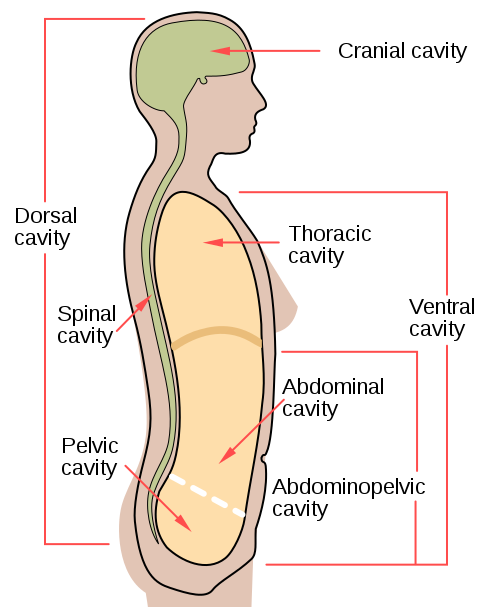
7.6 Human Body Cavities Human Biology
The dorsal cavity is at the posterior, or back, of the body, including both the head and the back of the trunk. The dorsal cavity is subdivided into the cranial and spinal cavities. The cranial cavity fills most of the upper part of the skull and contains the brain. The spinal cavity is a very long, narrow cavity inside the vertebral column.
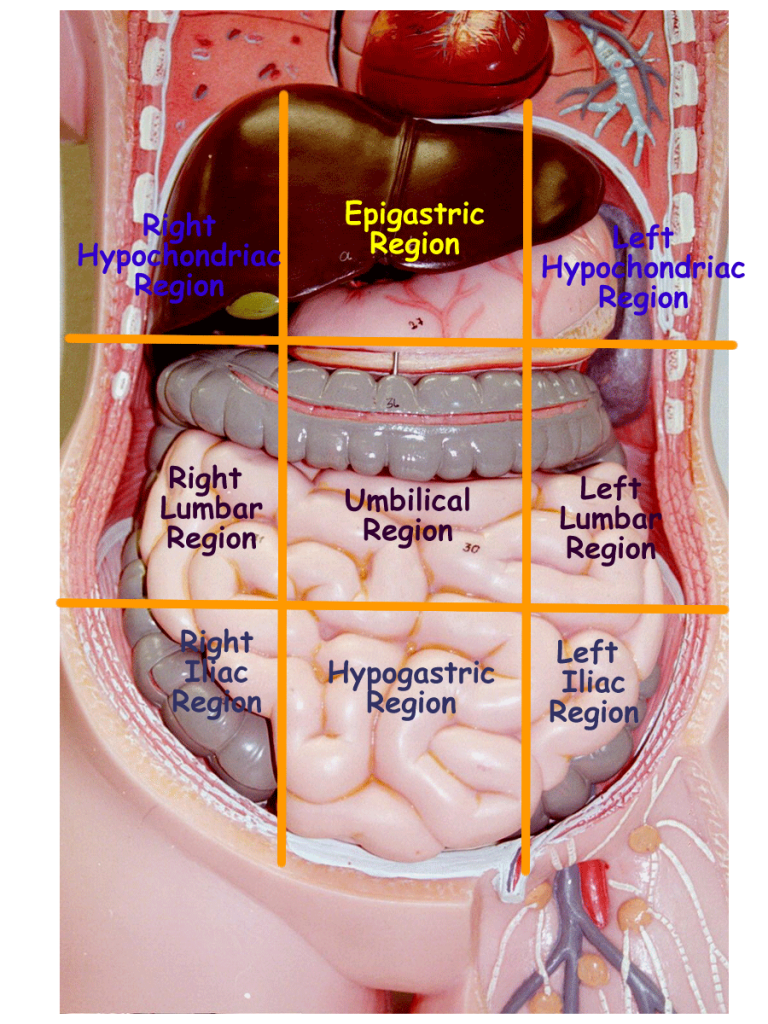
Body cavities and membranes Anatomy & Physiology
The walls of the ventral body cavity and outer covering of its organs contain a thin covering called the serosa (also called serous membrane). It is a double-layered membrane made up of two parts called the " parietal serosa " (lines the cavity walls) and " visceral serosa " (covers organs in the cavity). The serous membranes are.
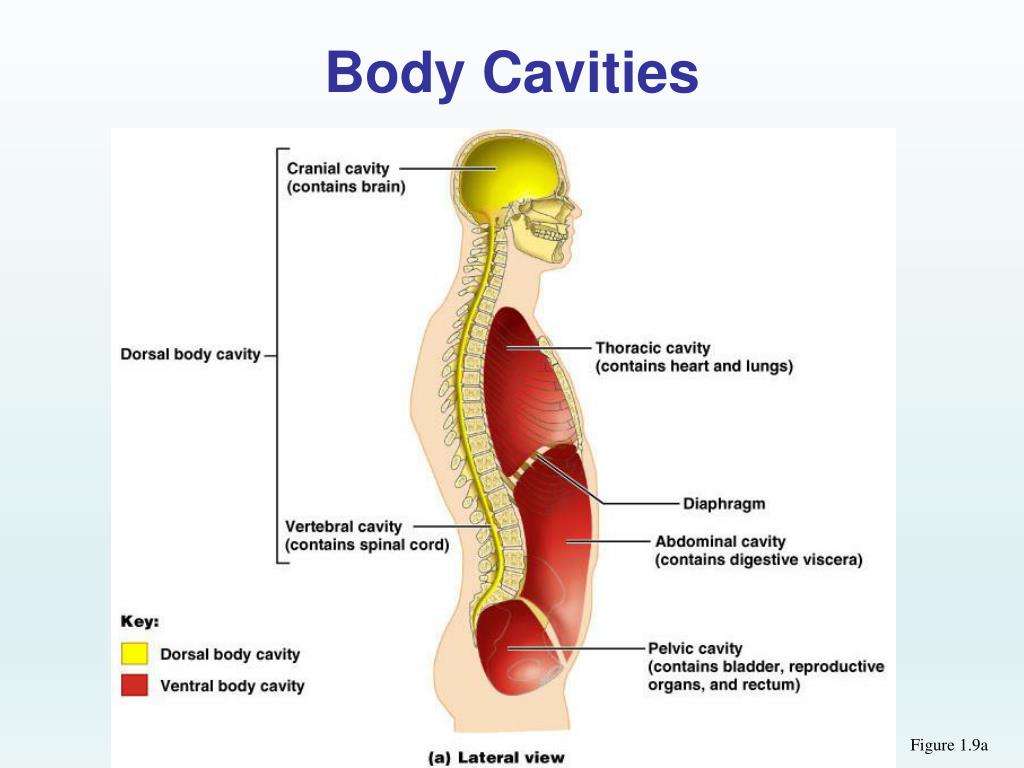
PPT The Human Body Anatomical Regions, Directions, and Body Cavities
Body Cavities and Serous Membranes. The body maintains its internal organization by means of membranes, sheaths, and other structures that separate compartments. The dorsal (posterior) cavity and the ventral (anterior) cavity are the largest body compartments (Figure 1.15). These cavities contain and protect delicate internal organs, and the.
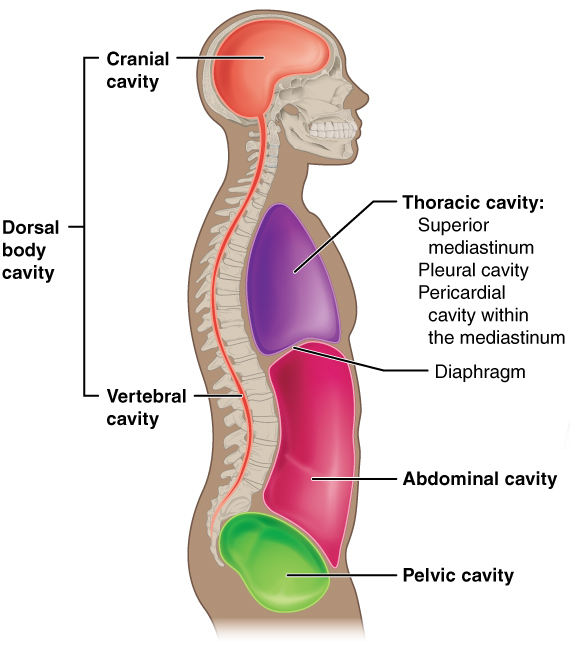
Human Body Cavity Diagram Human Body Anatomy
The thoracic cavity is the anterior ventral body cavity found within the rib cage in the torso. It houses the primary organs of the cardiovascular and respiratory systems, such as the heart and lungs, but also includes organs from other systems, such as the esophagus and the thymus gland. The thoracic cavity is lined by two types of mesothelium.
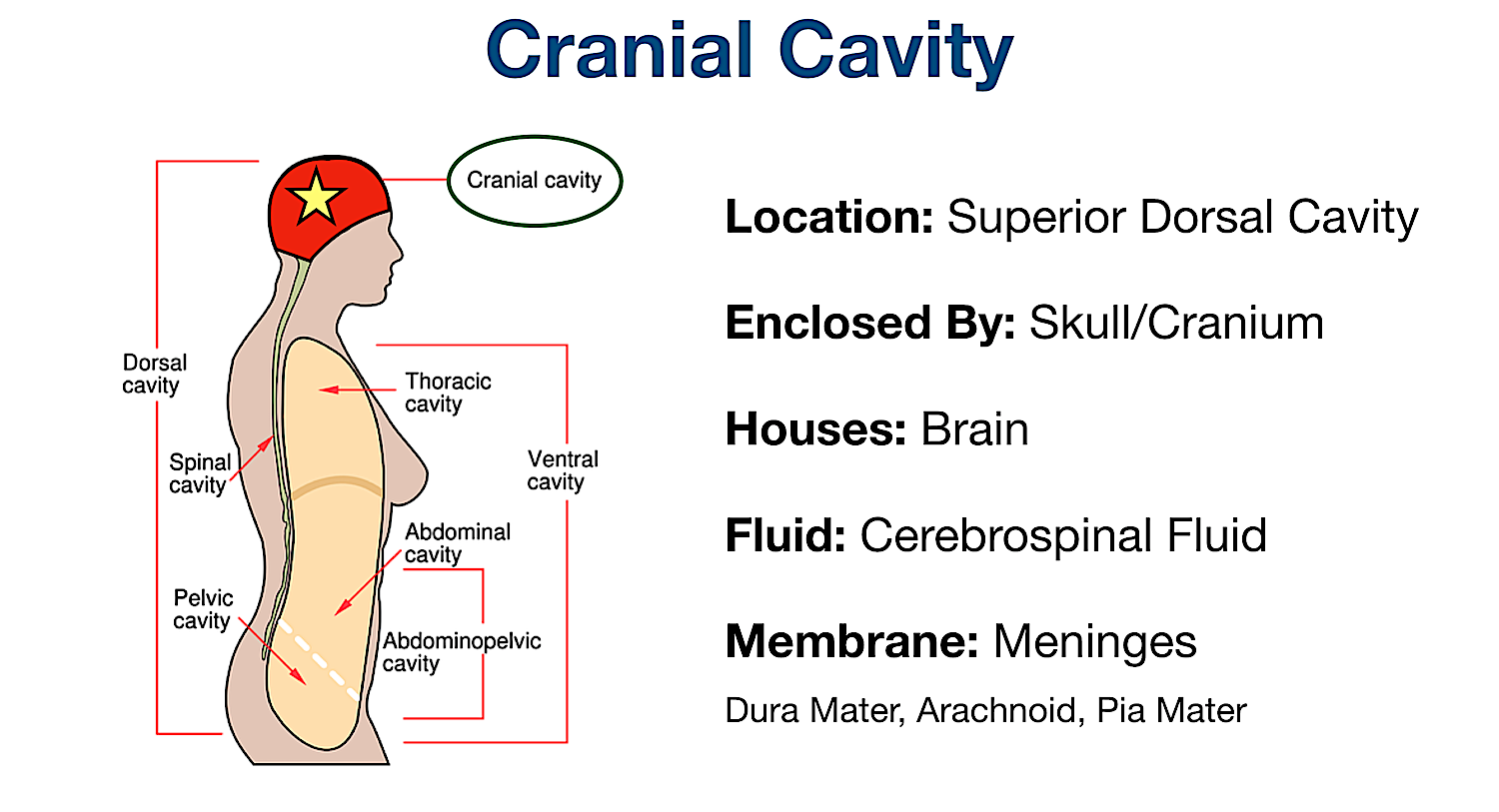
Body Cavities Labeled Organs, Membranes, Definitions, Diagram, and
Information. The major cavities of the human body are the spaces left over when internal organs are removed. There are additional body cavities which we will only discuss in lecture. These are the cavities created by serous membranes-the pleural cavities, the pericardial cavity, and the peritoneal cavity-and the mediastinum.
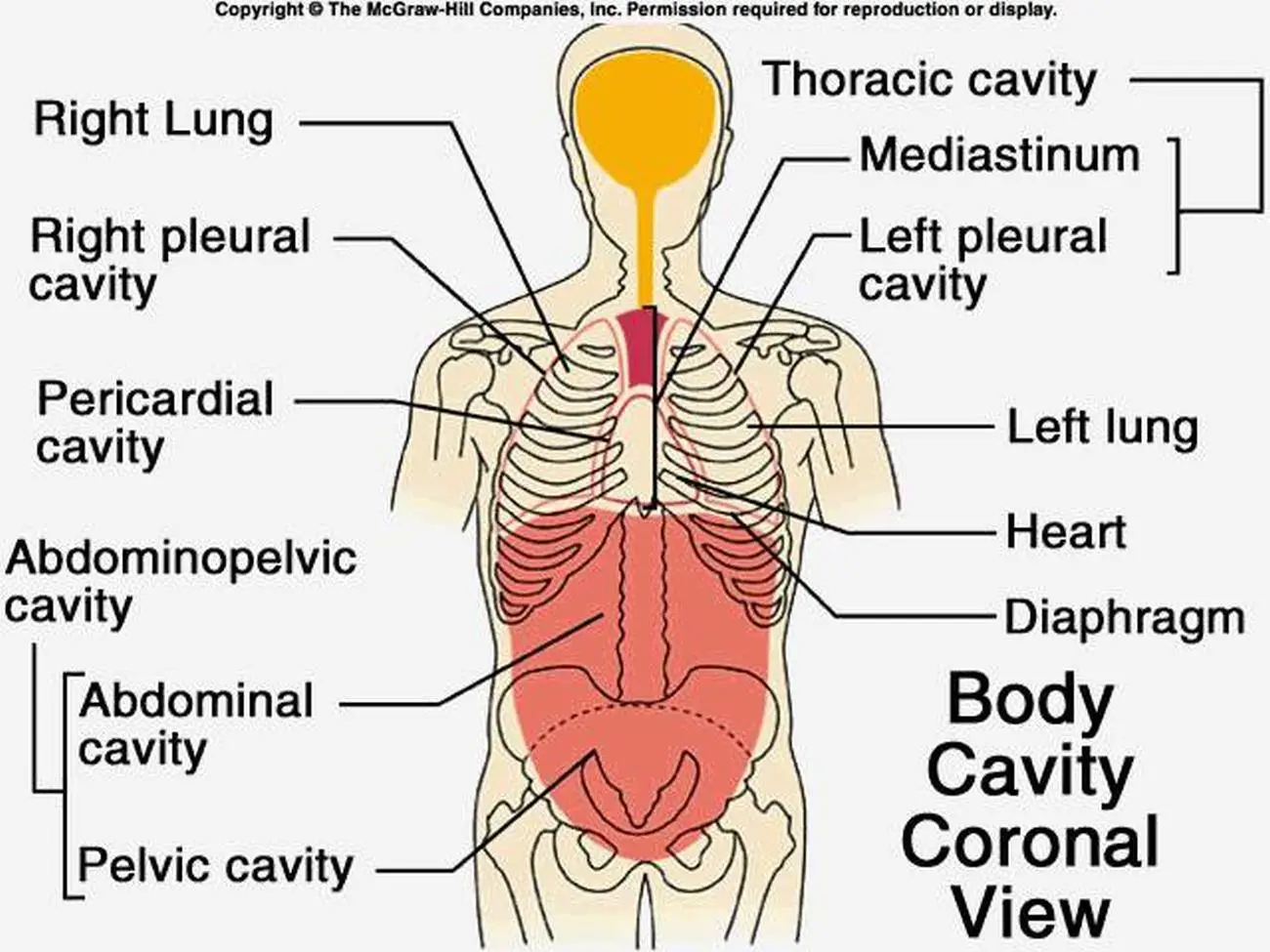
Pictures Of Cavity, Anatomical
Body Cavities and Serous Membranes The body maintains its internal organization by means of membranes, sheaths, and other structures that separate compartments. The dorsal (posterior) cavity and the ventral (anterior) cavity are the largest body compartments (Figure 3.5).
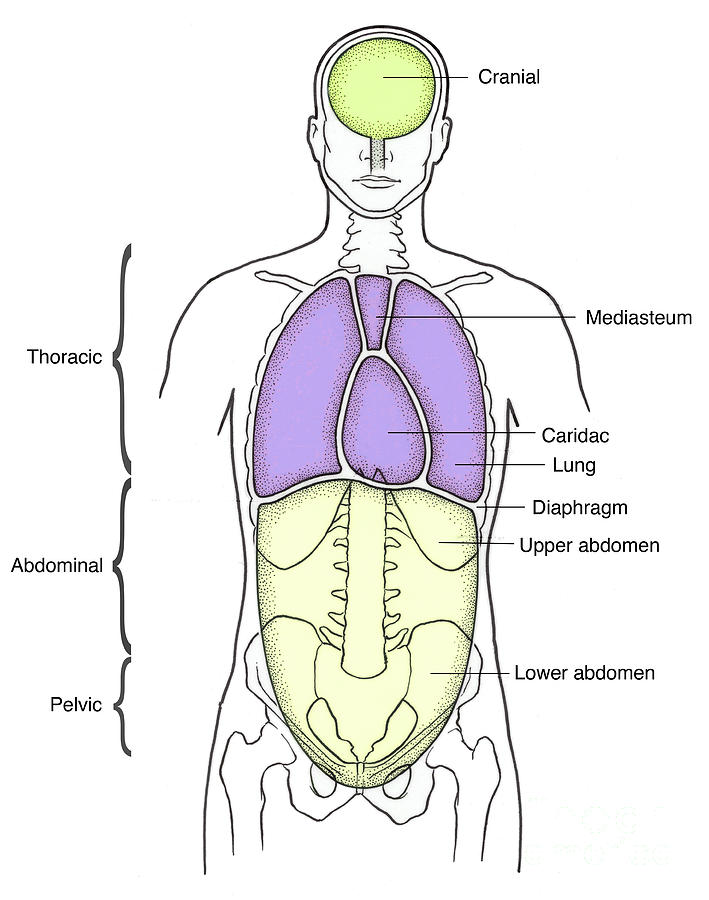
Illustration Of Anterior Body Cavities Photograph by Science Source
Figure 1.4.3 - Planes of the Body: The three planes most commonly used in anatomical and medical imaging are the sagittal, frontal (or coronal), and transverse planes. Body Cavities . The body maintains its internal organization by means of membranes, sheaths, and other structures that separate compartments.

PPT Body Planes, Directions, and Cavities PowerPoint Presentation
In the body itself, it is a hollow place usually filled with organs, nerves, vessels, and muscles. Here are the body's cavities: The cranial cavity. Image from Visible Body Suite . The thoracic cavity. Image from Visible Body Suite. The abdominal cavity. Image from Visible Body Suite. The pelvic cavity. Image from Visible Body Suite.
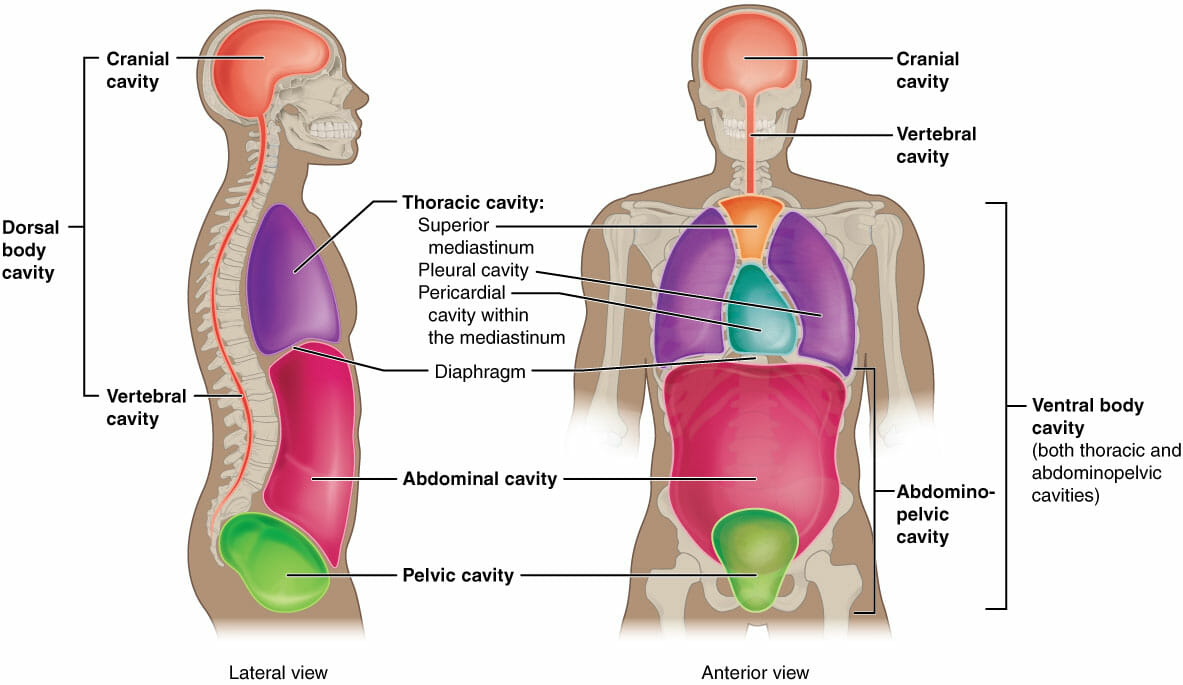
Body Cavities and Organs Biology Dictionary
Anatomy and Physiology Levels of organization of the Human Body Characteristics and Maintenance of Life Homeostasis and Feedback Body Cavities, Membranes, and the 11 Body / Organ Systems Diagnostic Imaging techniques and the different types of microscopes and devices for studying the body WEEK 2

Dorsal and other body cavities cross section, outline illustration
Start studying Body Cavities. Learn vocabulary, terms, and more with flashcards, games, and other study tools.. The cavity located between the upper portion of the lungs + 1 more side. Term. Pleural Cavity. Definition. Contains the lungs + 1 more side. Term. Pericardial Cavity.
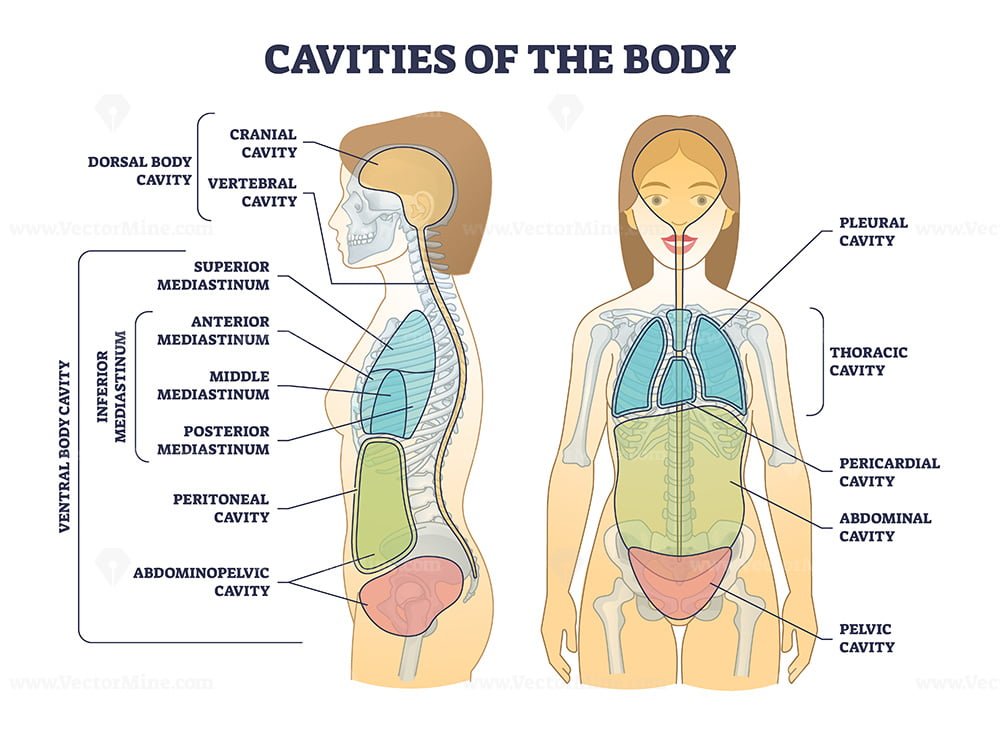
Cavities of body and anatomical compartment medical division outline
Figure 1.2.1 1.2. 1 : These two people are both in anatomical position. (CC-BY, Open Stax ) When referencing a structure that is on one side of the body or the other, we use the terms "anatomical right" and "anatomical left.". Anatomical right means that the structure is on the side that a person in anatomical position would consider.